Lisbon’s Historic Neighborhood of Belém: What to See & What to Skip
As I hopped off the train in Lisbon’s magnificent Gare do Oriente train station, I was most looking forward to visiting the Portuguese capital’s historic neighborhood of Belém. Six kilometers west of Lisbon’s historic center, Belém (pronounced “bih-LANG” [bɨˈlɐ̃j]) has a concentration of museums and monuments a lot higher than the rest of Lisbon—or any city, for that matter.
The area around Belém became an important harbor for sailors departing from and arriving in Lisbon during the Age of Exploration, an era when Portugal dominated the seas. Today, with the advent of modern tourism, Belém has become a great daytrip away from the city center, a great place to moor your ship for a spell and take in the wonders of this World Heritage Site. I’ll take you throughout the neighborhood below and let you know whether each site is worth seeing—or skipping.
This sprawling, gargantuan complex owes its creation to King Manuel I, who ordered a monastery to be built here in 1501 to minister to Atlantic-bound mariners and pray for the souls of the kings of Portugal. It was paid for with the 5% tax the crown levied on all goods coming from Portuguese trade and exploration abroad, mainly spices. Until the mid-1800s, a community of Hieronymite monks (i.e., the Order of St. Jerome) lived in these cells, strolled through the cloisters, and prayed in the church.
Constructed in gleaming white limestone, the monastery was designed in the Late Gothic style, also known in Portugal as Manueline because King Manuel was a big sponsor of architectural projects at the time.
Although the orderly and idealizing Renaissance style was in full swing in Italy at the time, I think it’s so cool that Portugal took the Gothic style to its fanciful and otherworldly extreme: richly-decorated cloister arches float from one column to another; flowers, leaves, and natural motifs creep up pills and columns; and inside the church, you feel as if you’ve entered a forest—the columns branch out into vaultings that cover the ceiling like spider webs.
Verdict: SEE
Technically part of the Jerónimos Monastery, this museum’s exhibit halls are housed on the ground floor of the building. I wasn’t very impressed with it, but to be fair, I have already frequented most of the archaeology museums on the Iberian Peninsula, so perhaps I was a tough sell. The ancient Egypt display was really dated, and apart from a temporary exhibition on shipwreck findings, there wasn’t much else. Go to Madrid if you’re looking for a world-class archaeology museum.
Verdict: SKIP
I was similarly bored by the Maritime Museum. I’m not sure what I was expecting, but Lisbon was the capital of one of the world’s all-time greatest maritime empires, and Belém was the site of countless sendings-off. What I ended up seeing was a bunch of scale models of ships, maps, and officer uniforms. The warehouse at the end of the exhibits was cool, though; you could wander around all sorts of fancy royal barges and modern pontoons.
Verdict: SKIP
I didn’t have enough time (or €€€) to hit up the National Carriage Museum, but the concept sounded cool enough: a bunch of old-time horse-drawn carriages used by the royalty or nobility now on display inside a lavish building. Unless you’re a completionist like me, though, it might be best to give this museum a pass.
Verdict: SKIP
Merely seven years old, the Berardo Collection Museum offers an accessible way to understand the art of the 20th and 21st centuries through exhibits that take you through all the major movements, counter-movements, and revival-isms across the past hundred years of western art. This free museum was established to house the private art of Portuguese businessman José Berardo, who amassed a truly comprehensive collection. Here, you can see everyone from Picasso, Dalí, and Mondrian to Warhol, Lichtenstein, and de Kooning.
Even if you aren’t particularly fond of modern art, you might leave with a new appreciation (or at least understanding) of paintings that can often be difficult to approach. At the beginning of every exhibit were a few paragraphs on the wall that introduced each movement and explained why they were unique, their significance, and what they were trying to accomplish. The museum’s free wifi and air conditioning were just the icing on the cake!
Verdict: SEE
Built on an island in the Tejo River almost 500 years ago, the Tower of Belém was intended to protect the strategic entrance to Lisbon’s harbor from attack—after all, you can see the Atlantic from Belém’s own shores. The Portuguese fortified the tower with embellished crenellations and plenty of cannons that would have greeted returning mariners and, uh, responded to hostile invaders.
Like the grandiose Jerónimos Monastery further up the road, the limestone Tower of Belém was also crafted in the Manueline style of architecture—how Late Gothic was expressed in Portugal at the time of the Age of Exploration. Thick stone ropes curl around walls and corners and delicate, flowery windows screen off walls…but nevertheless, a Renaissance loggia overlooks the main patio.
Verdict: SEE
To commemorate the 500th anniversary of Henry the Navigator’s death, the Monument to the Discoveries was built in 1960 during the Estado Novo dictatorship. Henry the Navigator had expanded the horizons of the world as it was known to Renaissance Europe, the first of many Portuguese mariners to “discover” new lands and begin new trade routes with the East.
The limestone monument was designed to look like the sails and prow of a caravel ship, and it’s decorated with statues of figures who were instrumental in ushering in Portugal’s golden age half a millennium ago. This Portuguese pantheon crowds the prow, while Henry the Navigator leads the way.
A quick elevator ride to the top takes you to a cramped lookout point from which you can take in incredible vistas: the Atlantic, Belém, the Tejo River, and the Golden Gate Bridge lookalike, the 25 de Abril Bridge.
It’s easy to judge this monument as politically incorrect today. Historians nowadays use “Age of Explorations” in place of the Eurocentric “Age of Discovery”; after all, Africans, Asians, and Native Americans had inhabited the “discovered” lands for thousands of years before the Portuguese happened upon them.
The use of the word padrão instead of monumento is also problematic; Wiktionary defines it as a “stone pillar, usually with a cross, inscribed with the coat of arms of Portugal, placed as a land claim along the coasts of Africa and Asia by numerous Portuguese explorers.”
The monument was built in an age when other European powers were granting independence to their colonies left and right, but Portugal’s nationalistic Estado Novo kept a firm grip on its remaining possessions in southern Africa. Perhaps this throwback to the supposed glories of colonialism didn’t seem such a bad thing at the time.
Verdict: SEE
If you need to escape from the onslaught of the tour groups that mob Belém, make a beeline for the Overseas Gardens. This grand tract of land is home to a lovely, curated selection of all sorts of local and endangered trees from the world over, with a peacock or two meowing in the corner (!). For a handful of euros, I got the chance to stroll through this respite from the madness, taking in a miniature paradise of fresh air and green space.
On the southeast corner of the park, you can peek across the fence at the President’s Palace, Portugal’s White House or Nº 10 Downing Street. Not sure why it’s so far out here in Belém and not in downtown Lisbon.
Verdict: SEE
These little pastries would justify taking a trip out to Belém all on their own. Warm egg custard sitting precariously in flaky, buttery pie crusts makes up a pastel de Belém. The secret recipe dates back to when monks worked and lived at the nearby Jerónimos Monastery. When Portuguese religious orders were expelled in 1834, the monks fled to the sugar refinery next door, where they began selling their soon-to-be-famous pastries. Since 1837, the Pastéis de Belém pastry shop has served up bajillions of these little delights. The to-go lines can wind down the street, but it’s easy to find a seat in the maze of various dining areas within.
Order at least dois (two) and make sure to have some coffee alongside them. There should be a jar of cinnamon on the table to round out the sweet flavors, and powdered sugar, too.
Verdict:SEE EAT!
The easiest way to get to the Belém neighborhood is by tram (elétrico). Head to Praça da Figueira or Praça do Comércio in downtown Lisbon and catch Tram #15 toward Algés. It’s a half-hour-long journey and almost always crammed with tourists, so get comfortable and watch your belongings. There are about half a dozen tram stops within Belém proper, so get off at whichever stop is closest to where you want to visit first—be it the Jerónimos Monastery or the Tower of Belém.
Which museums and monuments would you visit if you spent a day in Belém? Did I forget any of them? Share your recommendations in the discussion thread below!
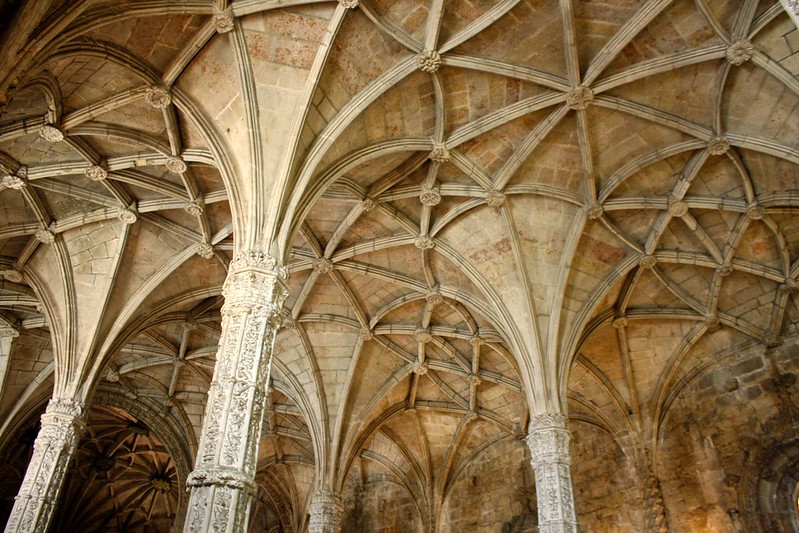
 |
| Insane ceiling tracery in the Mosteiro dos Jerónimos church |
The area around Belém became an important harbor for sailors departing from and arriving in Lisbon during the Age of Exploration, an era when Portugal dominated the seas. Today, with the advent of modern tourism, Belém has become a great daytrip away from the city center, a great place to moor your ship for a spell and take in the wonders of this World Heritage Site. I’ll take you throughout the neighborhood below and let you know whether each site is worth seeing—or skipping.
Mosteiro dos Jerónimos (Jerónimos Monastery)
 |
| South façade |
This sprawling, gargantuan complex owes its creation to King Manuel I, who ordered a monastery to be built here in 1501 to minister to Atlantic-bound mariners and pray for the souls of the kings of Portugal. It was paid for with the 5% tax the crown levied on all goods coming from Portuguese trade and exploration abroad, mainly spices. Until the mid-1800s, a community of Hieronymite monks (i.e., the Order of St. Jerome) lived in these cells, strolled through the cloisters, and prayed in the church.
Constructed in gleaming white limestone, the monastery was designed in the Late Gothic style, also known in Portugal as Manueline because King Manuel was a big sponsor of architectural projects at the time.
 |
| Fanciful cloisters |
Although the orderly and idealizing Renaissance style was in full swing in Italy at the time, I think it’s so cool that Portugal took the Gothic style to its fanciful and otherworldly extreme: richly-decorated cloister arches float from one column to another; flowers, leaves, and natural motifs creep up pills and columns; and inside the church, you feel as if you’ve entered a forest—the columns branch out into vaultings that cover the ceiling like spider webs.
Verdict: SEE
Museu Nacional de Arqueologia (National Archaeological Museum)
 |
| Praça do Imperio, seen from the Monument to the Discoveries |
Technically part of the Jerónimos Monastery, this museum’s exhibit halls are housed on the ground floor of the building. I wasn’t very impressed with it, but to be fair, I have already frequented most of the archaeology museums on the Iberian Peninsula, so perhaps I was a tough sell. The ancient Egypt display was really dated, and apart from a temporary exhibition on shipwreck findings, there wasn’t much else. Go to Madrid if you’re looking for a world-class archaeology museum.
Verdict: SKIP
Museu da Marinha (Maritime Museum)
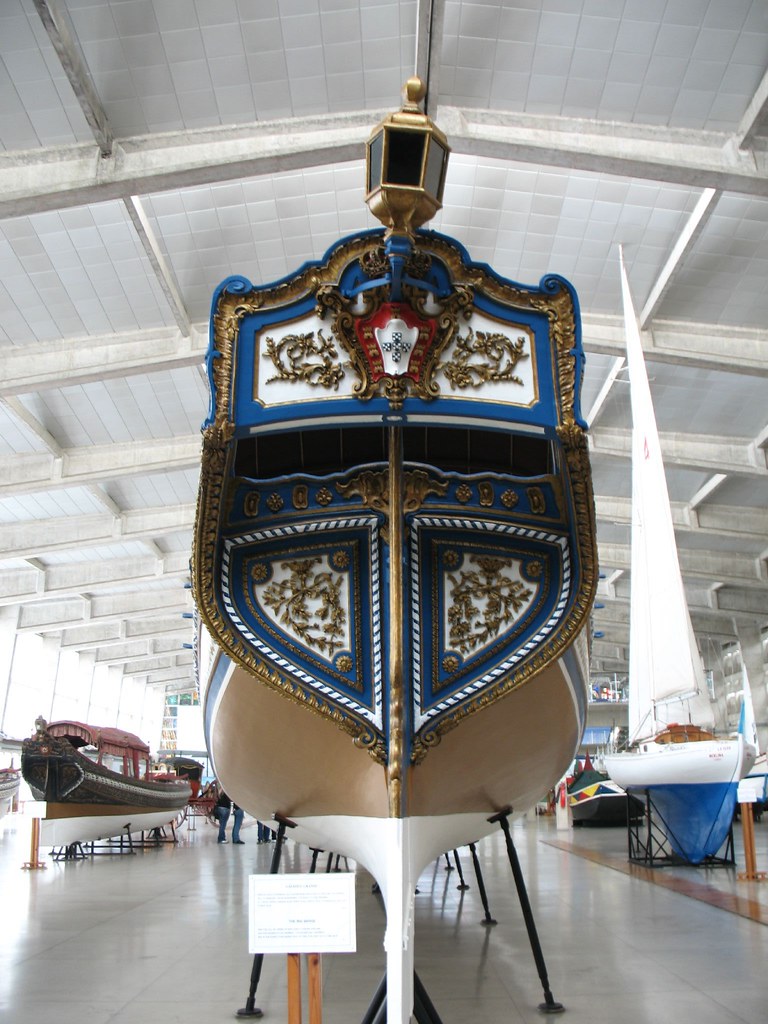 |
| (Source: Capitu) |
I was similarly bored by the Maritime Museum. I’m not sure what I was expecting, but Lisbon was the capital of one of the world’s all-time greatest maritime empires, and Belém was the site of countless sendings-off. What I ended up seeing was a bunch of scale models of ships, maps, and officer uniforms. The warehouse at the end of the exhibits was cool, though; you could wander around all sorts of fancy royal barges and modern pontoons.
Verdict: SKIP
Museu Nacional dos Coches (National Carriage Museum)
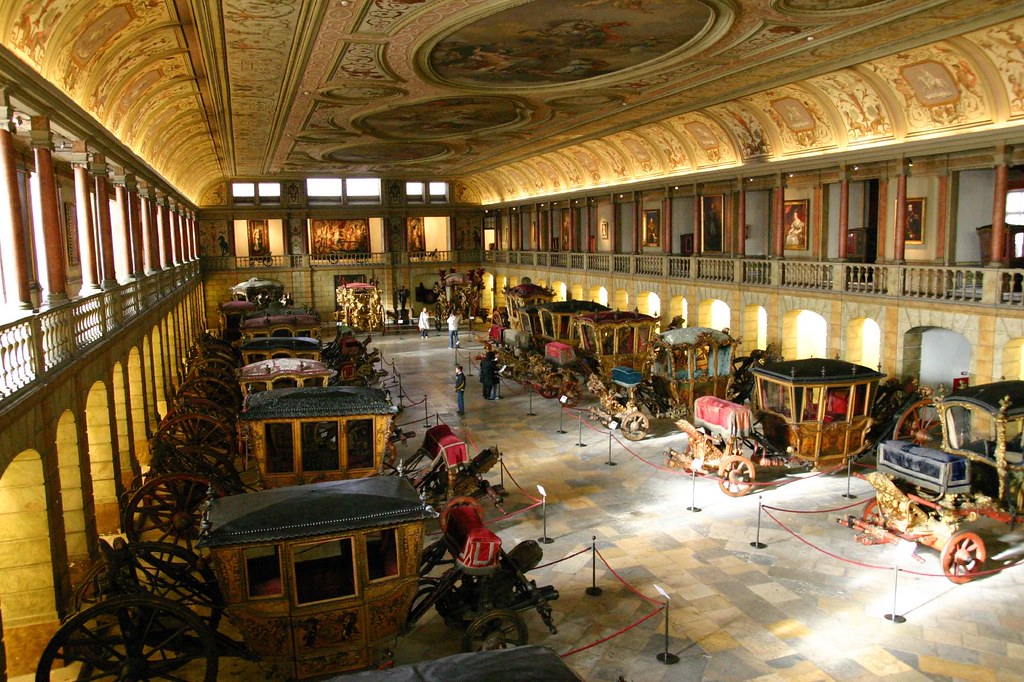 |
| (Source: Chuck Burgess) |
I didn’t have enough time (or €€€) to hit up the National Carriage Museum, but the concept sounded cool enough: a bunch of old-time horse-drawn carriages used by the royalty or nobility now on display inside a lavish building. Unless you’re a completionist like me, though, it might be best to give this museum a pass.
Verdict: SKIP
Museo Colecção Berardo (Berardo Collection Museum)
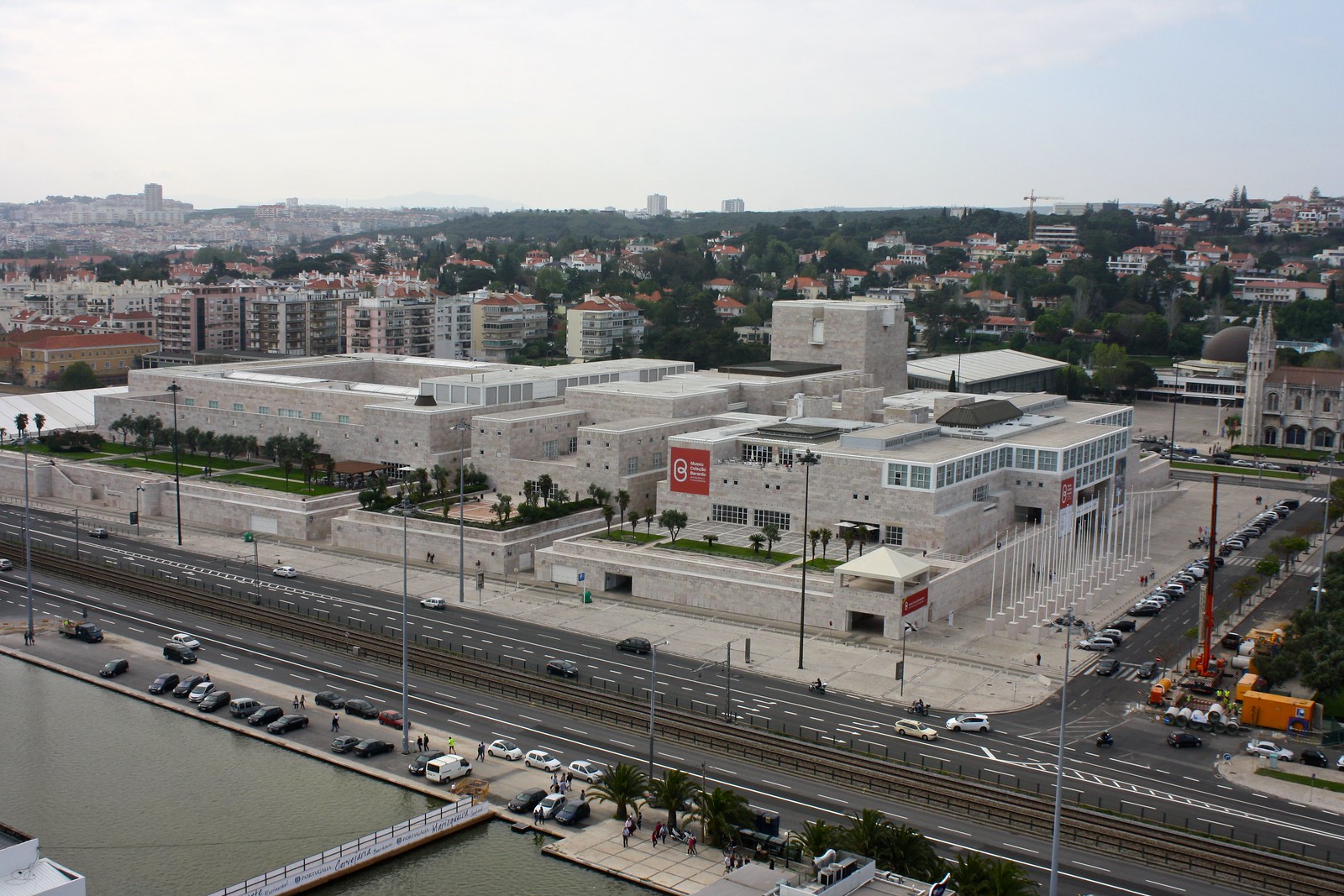 |
| The museum complex as seen from the Monument to the Discoveries |
Merely seven years old, the Berardo Collection Museum offers an accessible way to understand the art of the 20th and 21st centuries through exhibits that take you through all the major movements, counter-movements, and revival-isms across the past hundred years of western art. This free museum was established to house the private art of Portuguese businessman José Berardo, who amassed a truly comprehensive collection. Here, you can see everyone from Picasso, Dalí, and Mondrian to Warhol, Lichtenstein, and de Kooning.
Even if you aren’t particularly fond of modern art, you might leave with a new appreciation (or at least understanding) of paintings that can often be difficult to approach. At the beginning of every exhibit were a few paragraphs on the wall that introduced each movement and explained why they were unique, their significance, and what they were trying to accomplish. The museum’s free wifi and air conditioning were just the icing on the cake!
Verdict: SEE
Torre de Belém (Tower of Belém)
 |
| Floating in the Tejo River |
Built on an island in the Tejo River almost 500 years ago, the Tower of Belém was intended to protect the strategic entrance to Lisbon’s harbor from attack—after all, you can see the Atlantic from Belém’s own shores. The Portuguese fortified the tower with embellished crenellations and plenty of cannons that would have greeted returning mariners and, uh, responded to hostile invaders.
Like the grandiose Jerónimos Monastery further up the road, the limestone Tower of Belém was also crafted in the Manueline style of architecture—how Late Gothic was expressed in Portugal at the time of the Age of Exploration. Thick stone ropes curl around walls and corners and delicate, flowery windows screen off walls…but nevertheless, a Renaissance loggia overlooks the main patio.
Verdict: SEE
Padrão dos Descubrimentos (Monument to the Discoveries)
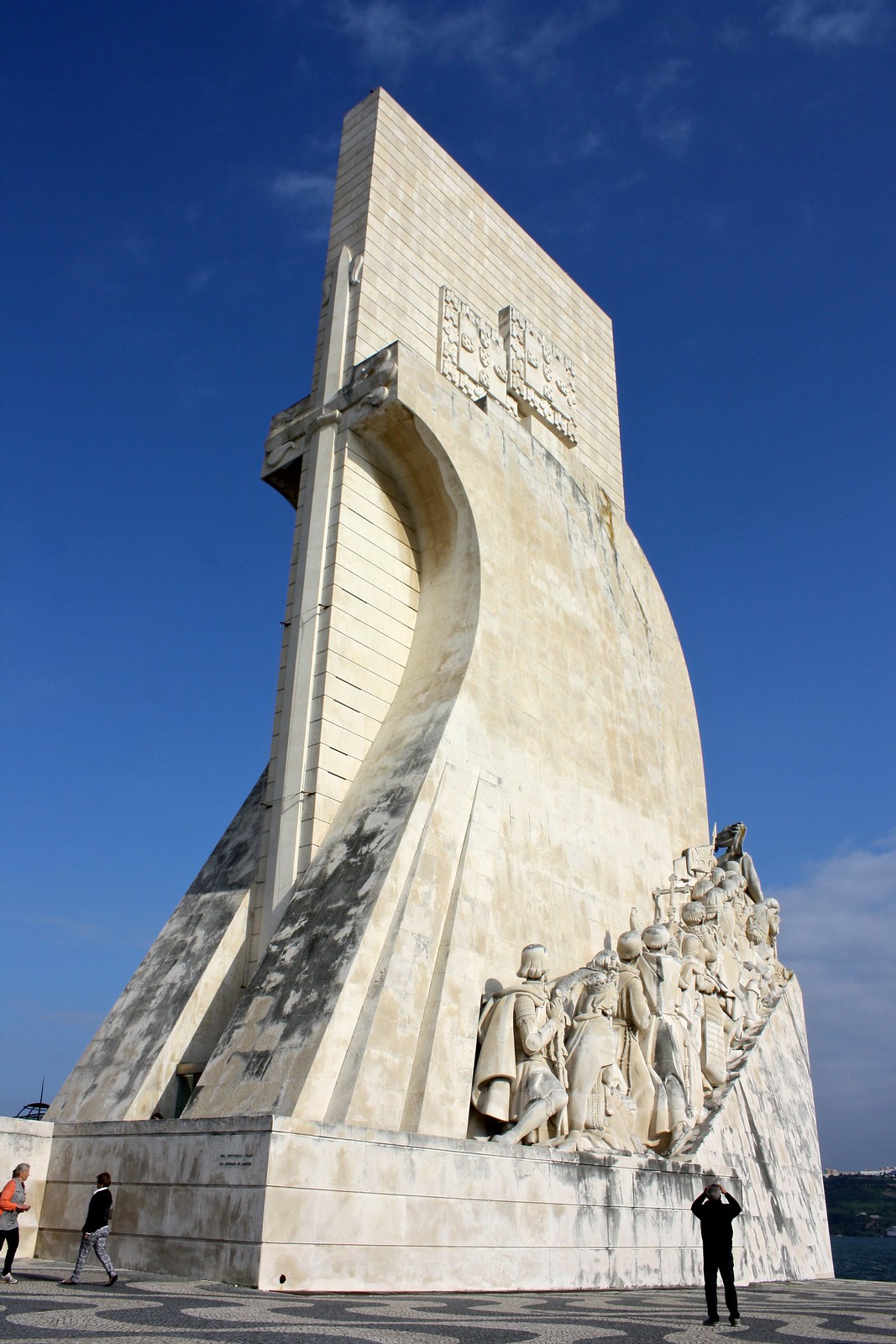 |
| The monument |
To commemorate the 500th anniversary of Henry the Navigator’s death, the Monument to the Discoveries was built in 1960 during the Estado Novo dictatorship. Henry the Navigator had expanded the horizons of the world as it was known to Renaissance Europe, the first of many Portuguese mariners to “discover” new lands and begin new trade routes with the East.
The limestone monument was designed to look like the sails and prow of a caravel ship, and it’s decorated with statues of figures who were instrumental in ushering in Portugal’s golden age half a millennium ago. This Portuguese pantheon crowds the prow, while Henry the Navigator leads the way.
A quick elevator ride to the top takes you to a cramped lookout point from which you can take in incredible vistas: the Atlantic, Belém, the Tejo River, and the Golden Gate Bridge lookalike, the 25 de Abril Bridge.
 |
| A ship sailing into the Atlantic |
It’s easy to judge this monument as politically incorrect today. Historians nowadays use “Age of Explorations” in place of the Eurocentric “Age of Discovery”; after all, Africans, Asians, and Native Americans had inhabited the “discovered” lands for thousands of years before the Portuguese happened upon them.
The use of the word padrão instead of monumento is also problematic; Wiktionary defines it as a “stone pillar, usually with a cross, inscribed with the coat of arms of Portugal, placed as a land claim along the coasts of Africa and Asia by numerous Portuguese explorers.”
The monument was built in an age when other European powers were granting independence to their colonies left and right, but Portugal’s nationalistic Estado Novo kept a firm grip on its remaining possessions in southern Africa. Perhaps this throwback to the supposed glories of colonialism didn’t seem such a bad thing at the time.
Verdict: SEE
Jardim do Ultramar (Overseas Gardens)
 |
| Fewer tourists, more flowers: YASS |
If you need to escape from the onslaught of the tour groups that mob Belém, make a beeline for the Overseas Gardens. This grand tract of land is home to a lovely, curated selection of all sorts of local and endangered trees from the world over, with a peacock or two meowing in the corner (!). For a handful of euros, I got the chance to stroll through this respite from the madness, taking in a miniature paradise of fresh air and green space.
On the southeast corner of the park, you can peek across the fence at the President’s Palace, Portugal’s White House or Nº 10 Downing Street. Not sure why it’s so far out here in Belém and not in downtown Lisbon.
Verdict: SEE
Pastéis de Belém (egg custard tarts)
 |
| You can’t just have one! |
These little pastries would justify taking a trip out to Belém all on their own. Warm egg custard sitting precariously in flaky, buttery pie crusts makes up a pastel de Belém. The secret recipe dates back to when monks worked and lived at the nearby Jerónimos Monastery. When Portuguese religious orders were expelled in 1834, the monks fled to the sugar refinery next door, where they began selling their soon-to-be-famous pastries. Since 1837, the Pastéis de Belém pastry shop has served up bajillions of these little delights. The to-go lines can wind down the street, but it’s easy to find a seat in the maze of various dining areas within.
Order at least dois (two) and make sure to have some coffee alongside them. There should be a jar of cinnamon on the table to round out the sweet flavors, and powdered sugar, too.
Verdict:
How to get there
 |
| Waiting for the tram |
The easiest way to get to the Belém neighborhood is by tram (elétrico). Head to Praça da Figueira or Praça do Comércio in downtown Lisbon and catch Tram #15 toward Algés. It’s a half-hour-long journey and almost always crammed with tourists, so get comfortable and watch your belongings. There are about half a dozen tram stops within Belém proper, so get off at whichever stop is closest to where you want to visit first—be it the Jerónimos Monastery or the Tower of Belém.
Which museums and monuments would you visit if you spent a day in Belém? Did I forget any of them? Share your recommendations in the discussion thread below!


